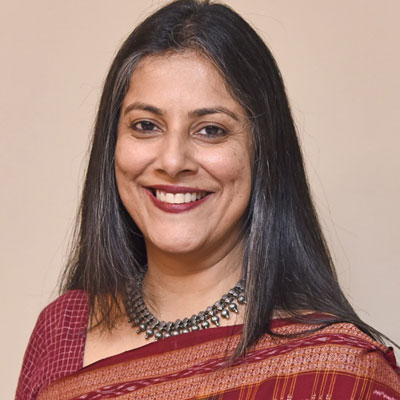
By Nandita Lakshmanan
Old habits die hard. I enjoy my mornings with a cup of tea and a stack of newspapers. I am still fascinated about how the world can be shrunk into a few pages, with a myriad of angles and points of view.
Ever so often, an interview, an op-ed, an article catches my eye. But this one (a few months ago) darting across the page in bold headlines said, “How to take a break: Are you busier than Jeff Bezos? If not, then learn to rest and recharge”. The headline was an odd one; clearly Jeff Bezos was added to grab eyeballs, and little else. But why not Oprah Winfrey? Would it mean then, that the male readership of the publication wouldn’t read the article?
I went back to the front page, to see the image of a renowned woman-artiste at an art festival. My curiosity aroused, I turned the pages, till I reached the back page. There was not one story, news item, or column that featured or had comments from a woman. Not one. I picked up the second newspaper, a regional daily, to see if it had a greater representation of women. It had an article with the photograph of the finance minister, and a couple of images of an older politician handing out doles to women. The sports page was bereft of any coverage of women athletes.
Over two weeks, my colleagues studied patterns on the representation of women in the media. The findings were not surprising. If print media is precious real estate, then its inhabitants are mostly male.
Unconscious bias. It’s a term I have been hearing a lot of these days. As I read more on the subject, I learnt that what we see in the media when it comes to representation of the minorities, is implicit bias. This revelation, through Isaac J Bailey’s article in Neiman Reports led me to Ed Yong’s 2018 piece in The Atlantic, and to several other accounts that told me how much needed to be done.
But I needed to pause.
This is not just about journalism, I said to myself. As a public relations practitioner, I am constantly discovering stories, identifying, and training spokespersons, widening the stakeholder base for my clients. The last mile of communicating the narrative for our clients is through the media. We support clients who wax eloquent about diversity and inclusion and practice it ourselves. Yet, most spokespersons we put forth for interviews, press conferences, webinars are skewed towards one gender.
In some ways, there has been progress. We take note of an all-male panel of speakers and call it out. As more women make their way to the boardroom, slow as the progress is, the spokesperson base is widening to position more women in the media. There are many women-centric network organisations emerging that are vocal and pushing for greater parity.
However, the question about what I was doing as a public relations practitioner, has not gone away. I do not have to pull out a spreadsheet to figure out that we are in a way, fuelling the gender under-representation of women in the workforce. What percentage of coverage that we generate through a media relations exercise, has women as the primary source? Can I add that bit of extra time in going beyond the “same small cadre of well-trodden names”? When I run campaigns on internal communications, expand stakeholder networks, develop messages, identify and train spokespersons and create a media strategy, can I think “diversity”, not merely as a “campaign idea”, but to quote science writer Laura Paskus, as a “career-long process” leading to worthwhile outcomes? Can I collaborate with the media to have healthy conversations and work together to end these biases? Can I convince clients that one of the measurement metrics for success, if “diversity and inclusion” is an objective, is to move towards a balance in share of voice for the minority employee base in their business?
I am acutely mindful that I am thinking of this almost three decades into my career. I am equally aware that this is not a unidimensional issue. However, there are times when the “I” must stand apart from the “we”, to take ownership and accountability for change that is overdue.
Let us pull out our spreadsheets.
——–
Nandita is Founder & Chairperson at The PRactice